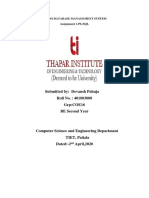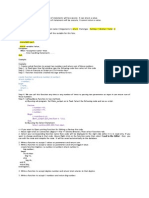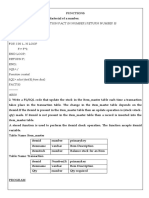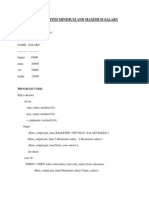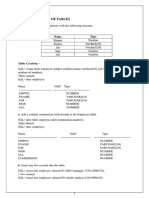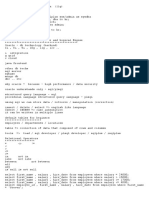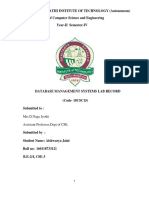0% found this document useful (0 votes)
4 views3 pagesFunctions
The document contains PL/SQL code defining several functions: 'findMax' to return the maximum of two numbers, 'emptot' to count the number of records in the 'emp' table, and 'reverse_it' to reverse an integer. It also includes examples of how to use these functions, such as finding the maximum of 23 and 45, counting employees, and reversing the number 4321. The code demonstrates basic PL/SQL operations including variable declaration, conditional statements, and loops.
Uploaded by
shivaCopyright
© © All Rights Reserved
We take content rights seriously. If you suspect this is your content, claim it here.
Available Formats
Download as DOCX, PDF, TXT or read online on Scribd
0% found this document useful (0 votes)
4 views3 pagesFunctions
The document contains PL/SQL code defining several functions: 'findMax' to return the maximum of two numbers, 'emptot' to count the number of records in the 'emp' table, and 'reverse_it' to reverse an integer. It also includes examples of how to use these functions, such as finding the maximum of 23 and 45, counting employees, and reversing the number 4321. The code demonstrates basic PL/SQL operations including variable declaration, conditional statements, and loops.
Uploaded by
shivaCopyright
© © All Rights Reserved
We take content rights seriously. If you suspect this is your content, claim it here.
Available Formats
Download as DOCX, PDF, TXT or read online on Scribd
/ 3










